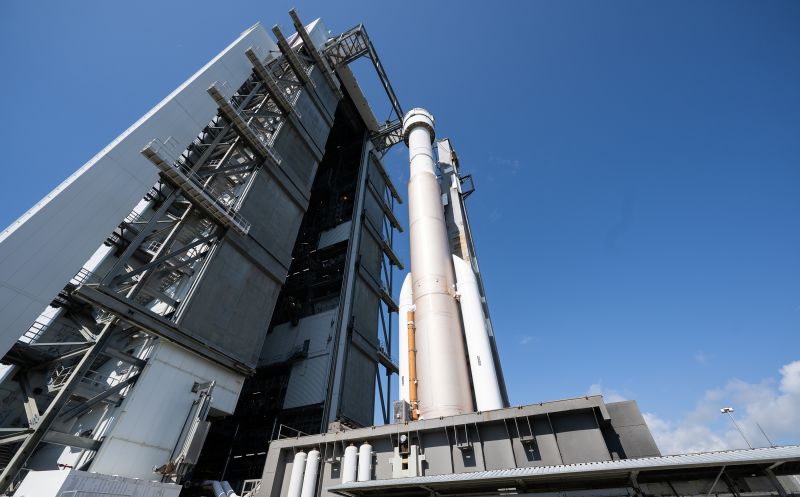
Boeing’s historic Starliner mission now expected to launch no sooner than May 17 after valve issue
The long-awaited first crewed mission of Boeing’s Starliner spacecraft will be delayed for more than a week after engineers identified an issue that halted launch preparations on Monday.
Starliner’s next opportunity to lift off on its maiden voyage from NASA Kennedy Space Center in Florida is at 6:16 p.m. ET on May 17.
Veteran NASA astronauts Suni Williams and Butch Wilmore had already taken their seats aboard the Starliner capsule when the operations team called for a scrub Monday night about two hours before launch.
The decision came after the United Launch Alliance team, which assembled the Atlas V rocket that Starliner will ride to space, identified an issue with a valve on the second stage, or upper portion, of the rocket.
Occasionally, valves can get into a position where they start to “buzz” by oscillating, or opening and closing rapidly, said Tory Bruno, CEO of United Launch Alliance. Some buzzing is OK, but too much could cause the valve to fail, Bruno added.
After safely removing Williams and Wilmore from the Starliner capsule Monday night, the United Launch Alliance team experimented with opening and closing the source of the buzz, a pressure regulation valve on the liquid oxygen tank of the rocket’s upper stage. More oscillations occurred during the process to remove fuel from the rocket.
The team conducted a thorough review of the valve on Tuesday.
“After evaluating the valve history, data signatures from the launch attempt, and assessing the risks relative to continued use, the ULA team determined the valve exceeded its qualification and mission managers agreed to remove and replace the valve,” according to an update NASA shared.
The decision to replace the valve means that the rocket will need to be rolled back from the launchpad on Wednesday and into the Vertical Integration Facility at Cape Canaveral Space Force Station in Florida.
While replacing the valve, the team will also conduct leak checks and other functional checkouts to ensure the rocket is ready for a potential May 17 launch attempt.
Meanwhile, Wilmore and Williams will stay in crew quarters at Kennedy Space Center and remain in quarantine before the launch to protect their health.
Why this launch is so important
Before the valve issue arose, Starliner — which Boeing designed to rival SpaceX’s prolific Crew Dragon capsule — was set to take off for its inaugural crewed test run at 10:34 p.m. ET Monday from Cape Canaveral Space Force Station.
This mission, dubbed the Crew Flight Test, could be the final major milestone before NASA deems Boeing’s spacecraft ready for routine operations as part of the federal agency’s Commercial Crew Program. The Starliner would join SpaceX’s Crew Dragon in NASA’s push to collaborate with private industry partners, expanding US options for ferrying astronauts to the International Space Station.
Williams and Wilmore have each ventured to space on two previous journeys aboard the NASA space shuttle and Russian Soyuz missions.
“They’re checking out a lot of the systems: the life support, the manual control,” NASA Administrator Bill Nelson said during a Friday news conference. “That’s why we put two test pilots on board — and of course the résumés of Butch and Suni are extensive.”
The launch would mark only the sixth maiden voyage of a crewed spacecraft in US history, Nelson noted: “It started with Mercury, then with Gemini, then with Apollo, the space shuttle, then (SpaceX’s) Dragon — and now Starliner.”
Williams will also become the first woman to join such a mission.
What to expect
If all goes according to plan following the launch, the spacecraft — carrying the astronauts — will break away from the Atlas V rocket after reaching orbit and begin firing its own engines. The Starliner will then spend more than 24 hours gradually making its way to the space station.
Williams and Wilmore are set to spend about a week aboard the orbiting laboratory, joining the seven astronauts and cosmonauts already on board, while the Starliner remains docked outside.
The two will then return home aboard the same Starliner capsule, which is expected to parachute to a landing at one of several designated locations across the southwestern United States.
